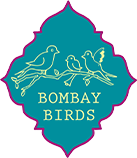The Origins
Pashmina, the name comes from the Persian word Pašmina and translates to “Soft Gold” in native Kashmiri.
The founder and architect of the Indian Pashmina trade and commerce was the 15th century ruler of Kashmir, Zayn-ul-Abidin, who introduced weavers from Central Asia to the sub-continent. The master craftsmen in Kashmir continue to pay tributes at his grave even now.
Pashminas have come to be appreciated the world over for their charisma, exquisiteness and exclusivity for centuries.
The Myth
Pashmina as a word over the last decade or two has entered the slang dictionary. It is so highly misused in the world of scarves and shawls, that consumers now attribute this name to any given shawl product. That is why one may notice a lot of retailers selling shawls with labels that say Pashmina ‘100% silk’ or Pashmina ’50% silk and 50% wool’ and so on.
Pashmina is not a scarf mixed other material. And well Pashmina is a Pashmina, not silk or wool.
What is a Pashmina
“All Pashmina is cashmere, but not all cashmere is Pashmina”
Pashmina is a type of a yarn or a thread, and not the fabric.
The classic Kashmiri Pashmina is among the most exquisite textiles ever woven, the product of consummate skill and artistry applied to one of the world’s most delicate fibres.
It is sourced from the Ladakh region of Kashmir, about 400 km from the capital of the state, Srinagar city.
Kashmiri Pashmina wool is collected from the “Changthangi” goat of the Ladakh region, which starts at altitudes of 4000 meters above the sea level, where the winter temperature drops to -35C.
Due to extreme cold the goats produce hair which is long, super fine and warm. This wool is collected by the herders during the spring season (May – July) and it grows back by the time the winter sets in.
The Creation
Each Pashmina is unique.
The illustration shows in detail the complex art of weaving Pashmina on a handloom. Years of practice and patience is required to perfect this sophisticated weaving technique. The artisans weaving the shawls usually inherit the art from their forefathers. And one may find their signature at the bottom of the shawl.
Each of our unique shawls take about 3 – 6 weeks to weave, depending on the size and weave pattern.
In the case of the exclusive ‘Kanni’ designs, it takes about 4 -5 Months to weave a single piece.
The Specifications
The differences between Pashmina & other wools.
Pashmina: 12 — 13 microns (micron is one millionth of a meter)
Cashmere: 15 — 19 microns
Kashmir Merino Wool: 20 — 24 microns
A human hair – 70 micron
The Bombay Birds Pledge
We stand by the authenticity of our produce.
Each scarf from our Unique Pashmina collection is made of Pashmina yarn which is collected from the “Changthangi” goat in the Ladakh region in the Indian Himalayan valley.
The product is made only by traditional methods of hand weaving & handcrafted by artisans in Kashmir, India.
We strive to keep this ancient craftsmanship alive to support the artisans and bring you the best quality & urban designs.
We guarantee no child labour has been or ever will be involved in any of our productions.


